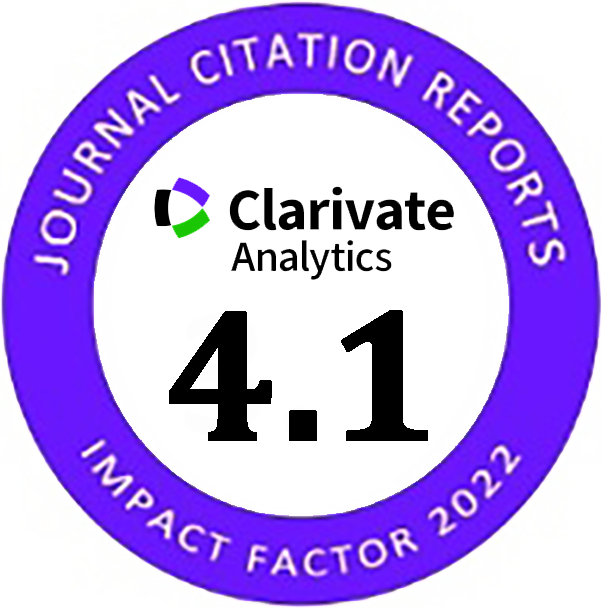Effect of Pumice Stone and Sugar Molasses on the Behavior of Reinforced Concrete One-Way Ribbed Slabs
Abstract
Doi: 10.28991/CEJ-2022-08-02-011
Full Text: PDF
Keywords
References
Al-Azzawi, A. A., Abbas, J., & Al-Asdia. (2017). Behavior of one way reinforced concrete slabs with styropor blocks. Advances in Concrete Construction, 5(5), 451–468. doi:10.12989/acc.2017.5.5.451.
Ashour, S. A. (2000). Effect of compressive strength and tensile reinforcement ratio on flexural behavior of high-strength concrete beams. Engineering structures, 22(5), 413-423. https://doi.org/10.1016/S0141-0296(98)00135-7.
Hameed Naser Al-Mamoori, F., & Hameed Naser Al-Mamoori, A. (2018). Reduce the Influence of Horizontal and Vertical Cold Joints on the Behavior of High Strength Concrete Beam Casting in Hot Weather by Using Sugar Molasses. International Journal of Engineering & Technology, 7(4.19), 794. doi:10.14419/ijet.v7i4.19.27999.
Altun, F., & Haktanir, T. (2001). Flexural Behavior of Composite Reinforced Concrete Elements. Journal of Materials in Civil Engineering, 13(4), 255–259. doi:10.1061/(asce)0899-1561(2001)13:4(255).
Adil, M., & Abdulrazzaq, O. A. (2017). Flexural Behavior of Composite Reinforced Concrete Slabs. Iraqi Journal of Civil Engineering, 11(2), 55-65.
Jomaa’h, M. M., Ahmed, S., & Algburi, H. M. (2018). Flexural Behavior of Reinforced Concrete One-Way Slabs with Different Ratios of Lightweight Coarse Aggregate. Tikrit Journal of Engineering Sciences, 25(4), 36–44. doi:10.25130/tjes.25.4.07.
Adheem, A. H., Rasheed, L., & Ali, I. M. (2018). Flexural behavior of lightweight aggregate concrete one-way slabs. International Journal of Civil Engineering and Technology, 9(13), 277–289.
Selwyn Babu, J., & Rex, J. (2019). Experimental investigation on lightweight concrete slabs. International Journal of Recent Technology and Engineering, 7(5), 502–506.
Khalil, Ali Omer. (2018). Behavior of Light Weight Aggregate Concrete Slabs with Styropor Blocks. MSc. Thesis, Al-Nahrain University, Baghdad.
Al-Nasra, M., Abdulraziq, R., Abouelnaga, Y., AlMofleh, A., Ayub, O., Abdelsadig, M., & Mohammed, O. (2019). Investigating the Effect of the Ribs Spacing on the One Way Reinforced Concrete Ribbed Slab Strength. Journal of Engineering and Applied Sciences, 14(15), 5138–5142. doi:10.36478/jeasci.2019.5138.5142.
Buka-Vaivade, K., Sliseris, J., Serdjuks, D., Sahmenko, G., & Pakrastins, L. (2019). Numerical Comparison of HPFRC and HPC Ribbed Slabs. IOP Conference Series: Materials Science and Engineering, 660(1), 12054. doi:10.1088/1757-899X/660/1/012054.
Huang, W., Ma, X., Luo, B., Li, Z., & Sun, Y. (2019). Experimental Study on Flexural Behaviour of Lightweight Multi-Ribbed Composite Slabs. Advances in Civil Engineering, 2019, 1–11. doi:10.1155/2019/1093074.
Liu, J., Hu, H., Li, J., Chen, Y. F., & Zhang, L. (2020). Flexural behavior of prestressed concrete composite slab with precast inverted T-shaped ribbed panels. Engineering Structures, 215(110687). doi:10.1016/j.engstruct.2020.110687.
S. Abdulhussein, S., & A. Alfeehan, A. (2020). Experimental Study of Depth Variation in Flanged Ribbed Lightweight Concrete Slabs. Journal of Engineering and Sustainable Development, 24(Special), 359–364. doi:10.31272/jeasd.conf.1.38.
Buka-Vaivade, K., Serdjuks, D., Sliseris, J., Podkoritovs, A., & Ozolins, R. (2021). Timber-concrete composite ribbed slabs with high-performance fibre-concrete. Vide. Tehnologija. Resursi - Environment, Technology, Resources, 3, 40–44. doi:10.17770/etr2021vol3.6551.
European Committee for Standardization. (2011). Cement: Composition, Specifications and Conformity Criteria for Common Cements. British Standards Institute, London, UK.
ASTM C1240-15. (2020). C1240 Standard Specification for Silica Fume Used in Cementitious Mixtures. In Annual Book of ASTM Standards. American Society for Testing and Materials, P.A., United States.
Iraqi Specification Standard No.45/1984. (1984). Aggregate of natural sources using in concrete and building. Central Organization for Standardization and Quality Control, Baghdad, Iraq.
ASTM C330/C330M-17a. (2017). Standard Specification for Lightweight Aggregates for Structural Concrete. American Society for Testing and Materials, P.A., United States.
ASTM C 494-19. (2019). Standard Specification for Chemical Admixtures for Concrete. American Society for Testing and Materials, P.A., United States.
ASTM A615 Specification for Deformed and Plain Carbon-Steel Bars for Concrete Reinforcement. (2020). American Society for Testing and Materials, P.A., United States.
ACI 213R-14. (2014). Guide for Structural Lightweight Concrete. American Concrete Institute, Indiana, United States.
ACI 363R-10. (2010). Report on High-Strength Concrete. American Concrete Institute, Indiana, United States.
BS 1881-Part 116. (2000). Method for Determination of Compressive Strength of Concrete Cubes. British Standards Institute, London, UK.
ASTM C39/C39M − 15a. (2015). Standard Test Method for Compressive Strength of Cylindrical Concrete Specimens. American Society for Testing and Materials, P.A., United States.
ASTM C496/C496M−17. (2017). Standard Test Method for Splitting Tensile Strength of Cylindrical Concrete Specimens. American Society for Testing and Materials, P.A., United States.
ASTM C78/C78M−18. (2018). Standard Test Method for Flexural Strength of Concrete (Using Simple Beam with Third-Point Loading). American Society for Testing and Materials, P.A., United States.
ASTM C597. (2016). Standard Test Method for Pulse Velocity through Concrete. In American Society for Testing and Materials, West Conshohocken, PA, USA. American Society for Testing and Materials, P.A., United States.
ASTM C567/C567M−19. (2019). Standard Test Method for Determining Density of Structural Lightweight Concrete. American Society for Testing and Materials, P.A., United States.
ASTM C642-13. (2013). Standard Test Method for Specific Gravity, Absorption, and Voids in Hardened Concrete. In ASTM International, West Conshohocken, American Society for Testing and Materials, P.A., United States.
ASTM C-1113 (2009) Standard Test Method for Thermal Conductivity of Refractories by Hot Wire (Platinum Resistance Thermometer Technique). American Society for Testing and Materials. Reapproved 2013, P.A., United States.
Jeffrey, S. R. (2003). Prestrectives in civil engineering. Commemorating the 150th anniversary of the American Society of Civil Engineering, United States.
ACI Commentary 318-19. (2019). Building Code Requirements for Structural Concrete. American Concrete Institute, Indiana, United States.
Hao, Y., Hao, H., & Chen, G. (2014). Experimental investigation of the behaviour of spiral steel fibre reinforced concrete beams subjected to drop-weight impact loads. Materials and Structures, 49(1-2), 353–370. doi:10.1617/s11527-014-0502-5.
Ahmad, S. H., & Barker, R. (1991). Flexural behavior of reinforced high-strength lightweight concrete beams. ACI Structural Journal, 88(1), 69–77. doi:10.14359/2753.
DOI: 10.28991/CEJ-2022-08-02-011
Refbacks
- There are currently no refbacks.
Copyright (c) 2022 Tamara Amer Mohammed

This work is licensed under a Creative Commons Attribution 4.0 International License.






